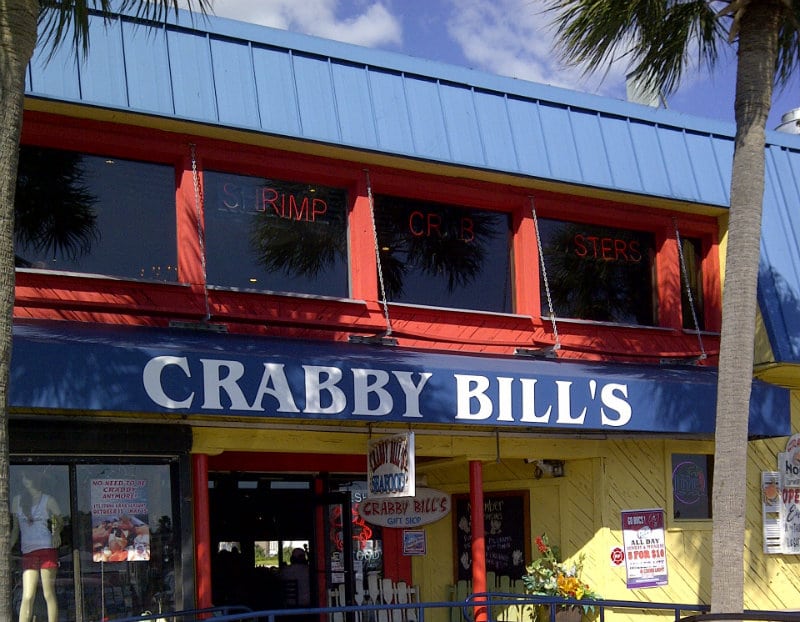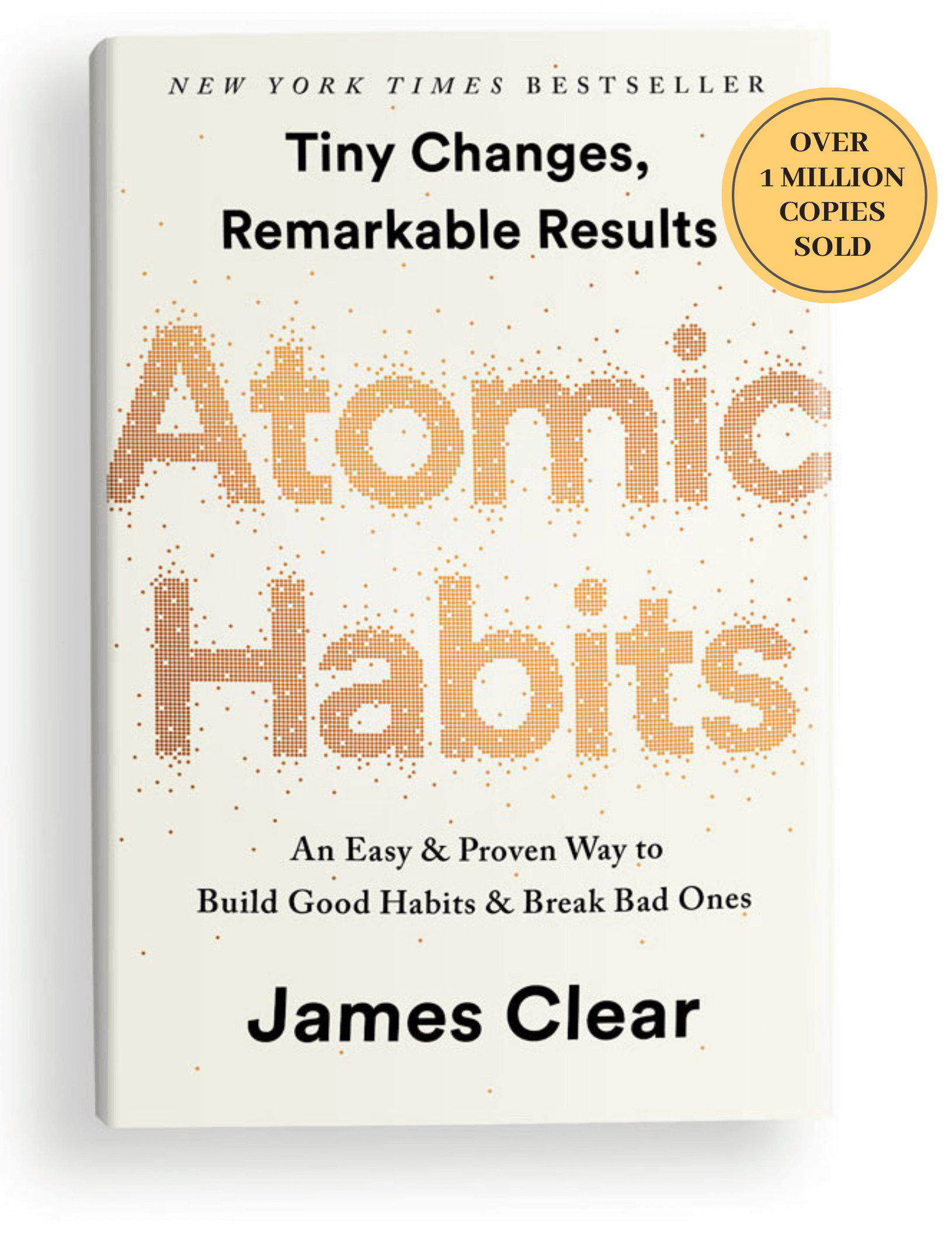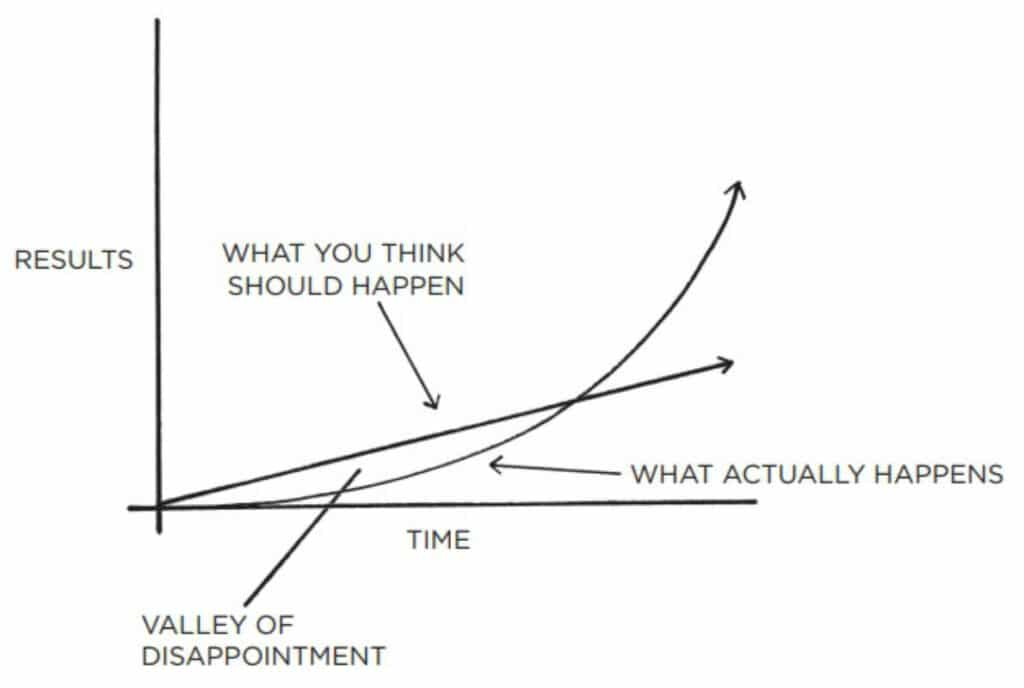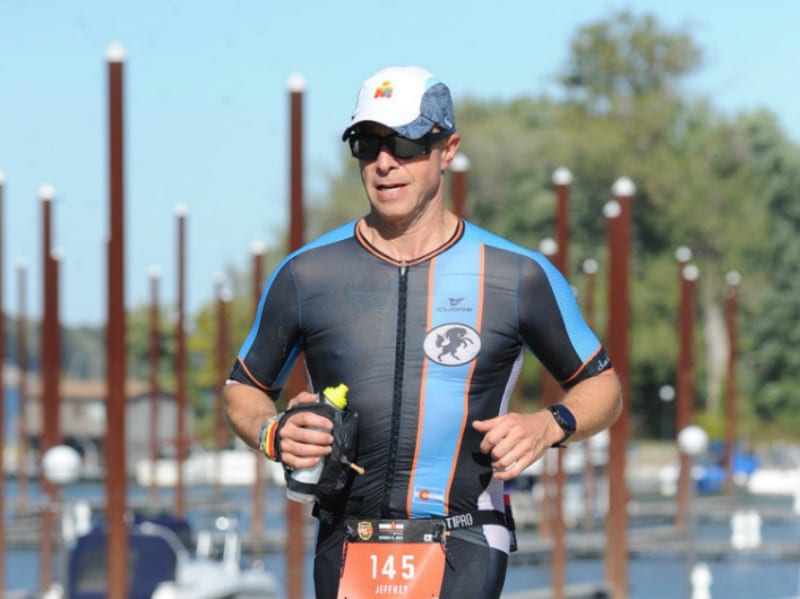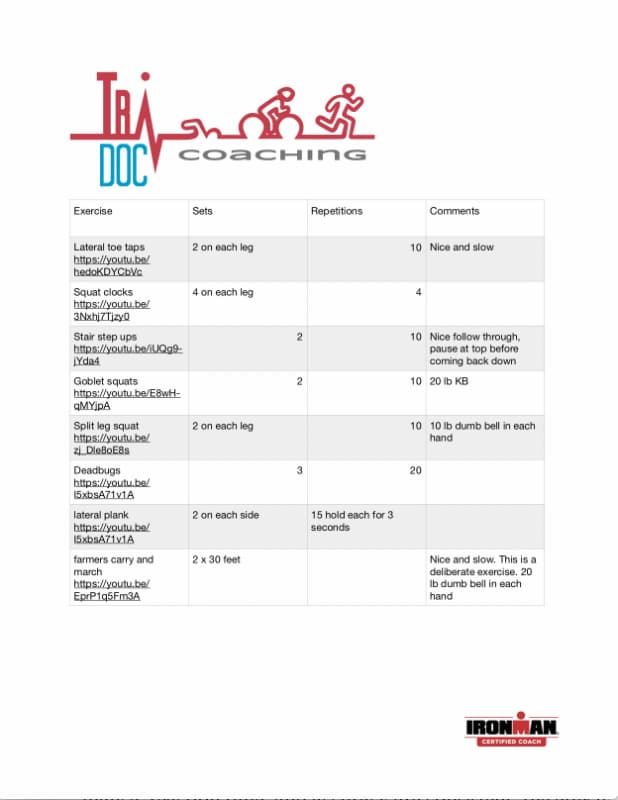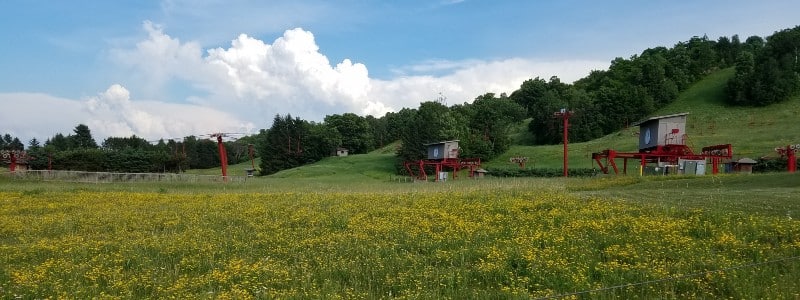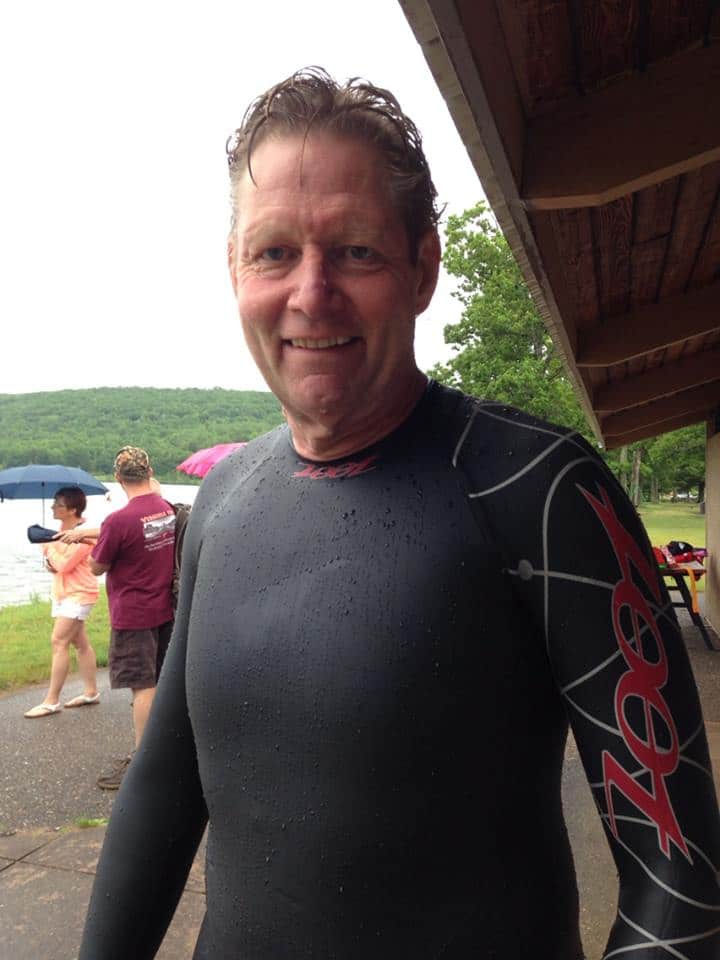Triathlon Across the USA: State #11 – Florida
Clearwater, Florida; November 11, 2012—TriRock Clearwater Triathlon
Joy and I used the timing of this triathlon to schedule a Florida vacation of a little over a week. The trip, in honor of our 39th wedding anniversary, provided opportunity to spend time with friends (Lyle & Diane in Deerfield Beach; Don & Sue in The Villages) and relax at the Holiday Inn in Highland Beach, one of our few romantic getaways.
Getting to the Florida Triathlon
We flew with my bike from Minnesota to West Palm Beach, Florida on Friday, November 2nd. Following a short drive south, we reached the Holiday Inn in Highland Beach, our base for a weekend visit with friends in nearby Deerfield Beach.
On Monday morning, we drove to The Villages, about one hour northwest of Orlando, where we spent the night with friends Don and Sue in the house they had rented. The next morning, we moved to a house in The Villages we had rented for four nights as part of a get-to-know-the-area package.
Through the rest of the week, I ran and cycled with a group of 60- and 70-year-olds. Joy and I also played golf with Don and Sue, took in a movie, went dancing every night, shopped, ate out, etc. In short, we had a blast.
On Saturday, we drove from The Villages to Clearwater Beach, the venue for the triathlon the next day. Before picking up the race packet, we enjoyed a fresh seafood lunch at Crabby Bill’s situated directly across the street from Pier 60, location of the transition area. After picking up the race packet and before driving to our hotel, we walked around the expo that was part of the triathlon.
1st TriRock Clearwater Triathlon
About 150 male and female triathletes from thirty-two states and five countries met for the inaugural TriRock Clearwater Triathlon on what was a near-perfect morning for a triathlon. Skies were blue with a few wispy clouds. The air temperature was comfortable, though cool, especially with a light breeze coming off the water.
Distances for the individual legs of this USAT-sanctioned sprint triathlon were:
- Swim: 0.34 mile (550 m)
- Bike: 13.4 mile (21 km)
- Run: 3.1 mile (5 km)
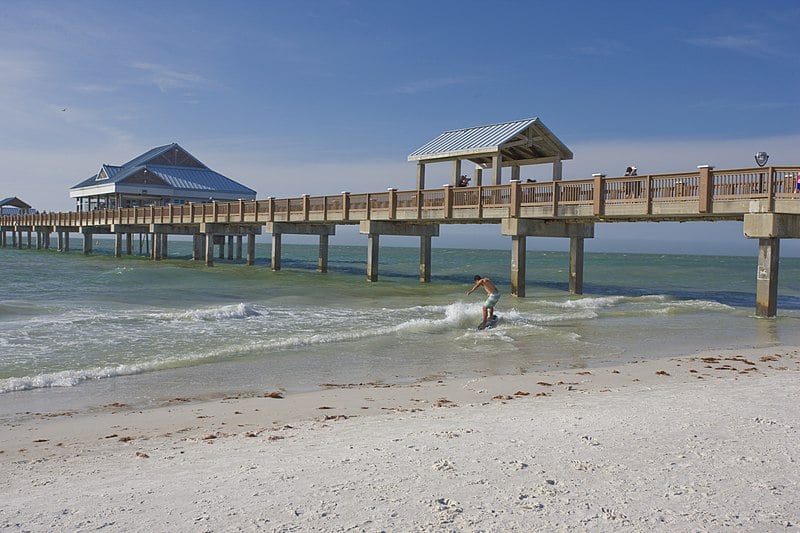
Swim
The water in the Gulf of Mexico was unexpectedly cold, around 65ºF. This meant that according to USA Triathlon rules, wetsuits were not only allowed but encouraged.
Swimmers started in waves based on age groups. The water was calm, making for a comfortable swim once I absorbed the initial shock of the cold water. Upon exiting the water, we ran to the grassy transition area across the beach with its mixture of sand and small shells.
Bike
The distinctive feature of this race’s bicycle leg was the ride up and over three bridges spanning inner coastal portions of water. The climb up and ride down from these bridges led to a challenging and, occasionally, fast (over 30 miles per hour) ride.
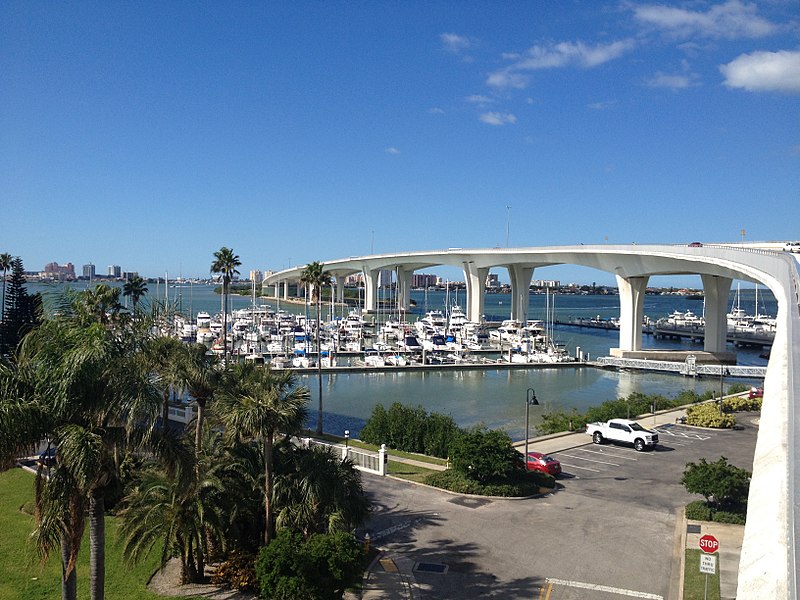
When not on a bridge, we snaked our way through neighborhoods in Clearwater, Belleair Beach, and Clearwater Beach, finishing the ride on Gulf Boulevard and Coronado Drive.
Run
The initial section of the run was along the causeway (bridge) that was also part of the bike course. On the way to the turnaround, we passed the first of several bands providing live music along the run course, another of the signature features of this race.
About one-mile into the run, we turned around and headed back in the direction of the park. At the roundabout across from the transition area, we continued on the completely flat running path along South Gulfview Boulevard, the street running parallel to Clearwater Beach. Here we encountered the next series of bands.
Following a second turnaround, we headed toward the finish line.
Results
Who says that ‘old people’ don’t take these races seriously? Maybe young people, but not those of us racing in the higher age groups.
This race again showed the competitiveness of older triathletes. The race for the second, third, and fourth places for the Males 55-59 Age Group was close; only 19 seconds separated the second and fourth place finishers.
I finished third in my age group, 8 seconds behind the second-place finisher and 11 seconds ahead of the fourth place finisher.
After the Florida Triathlon
Before traveling back to Minnesota, we made one more overnight stop in The Villages. With this visit, we could see our friends once more, enjoy more dancing at Lake Sumter Landing, and pack my bike for the airline ride home.
Race Firsts
- First triathlon performed with a vacation to celebrate our wedding anniversary.
- First triathlon with the swim portion in the Gulf of Mexico.
Leave Your Questions and Comments Below
What type swim do you prefer? ocean? lake? pool? Why?
Have you combined a race and vacation? If so, what has been your favorite?
Please share your comments below.

